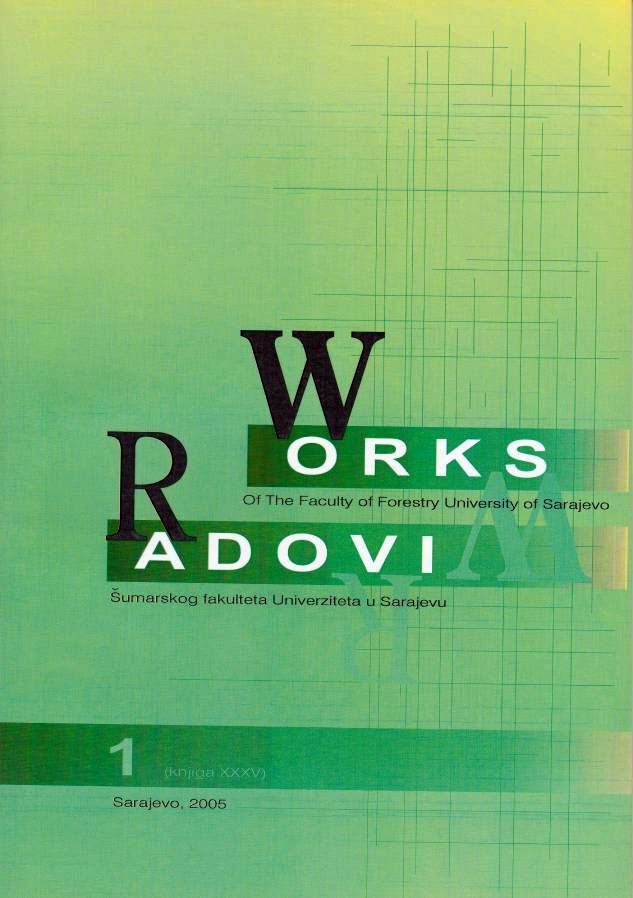Urban ornitofauna in Sarajevo
DOI:
https://doi.org/10.54652/rsf.2005.v35.i1.199Keywords:
Birds, urban environment, SarajevoAbstract
UDK 598.2(497.6 Sarajevo)
The increase of urbanization and industrialization on earth poses hard choices ahead of living organisms: adapt or perish! The number of animal species in large cities is constantly decreasing. Significance of urban green areas (parks, squares, alleys) for survival of the animal species in cities is very high. In Sarajevo, unlike in the large European cities, the percentage of green areas is very low (only 1, 90%). We conducted the research over the period of three years in order to find out how many bird species are living in pure urban parts of Sarajevo, and to determine the prevalence of certain species and their distribution.
Until summer of 2005 we registered 55 bird species. The most prevalent species are house sparrows, followed by feral pigeons. Out of the Corvids, we registered 6 species permanently present in the research area. Raven, Jay and Rook are relatively scarce unlike hooded crow, jackdaw and magpie which are most frequently found species after sparrow and pigeon.
From the birds of prey, the Peregrine falcon is most frequently found species, followed by sparrow hawk, goshawk and buzzard. Owls are represented by long- eared owl, tawny owl, scops owl and little owl.
Presence of three woodpeckers and their abundance, point at poor conditions in the city parks and the trees in those parks. Along Miljacka River, we found two duck species (Mallard and Teal) as well as white wagtail and little grebe.
The most frequently found species have the largest influence at urban areas and people. Defecating, noise, disturbing of walkers (Corvids), garbage dispersion and damages to urban greenery are most common factors which cause problems for people in the cities. Considering this, we should think about regulations of some species, e.g. Corvids.
Considering the small ratio of green areas, diversity is very high. Birds continue to survive in pure urban areas; some of them even progress better than in their natural habitat.
Downloads
References
BEISSINGER, S. R., and D. R. OSBORNE. (1982): «Effects of urbanization on avian community organization». Condor 84:75–83.
BOLGER, D. T., T. A. SCOTT, and J. T. ROTENBERRY (1997): “Breeding bird abundance in an urbanizing landscape in coastal southern California”. Conservation Biology 11:406–421.
Stephanie MELLES, Susan GLENN, and Kathy MARTIN (2003): «Urban Bird Diversity and Landscape Complexity: Species–environment Associations Along a Multiscale Habitat Gradient»;Ecology and Society, Vol 3; No1, pp.71-82.
Carol FOSS (2004): «Backyard Bird Habitat»; Ecology and Society, Vol 5; No1, pp.65-70.
FAHRIG, L. (2001): «How much habitat is enough?» Biological Conservation 100:65–74.
PETERSON R.T.; MOUNTFORT G., and HOLLOM P.A.D.(2000): “Birds of Britain and Europe”, New Edition; HarperCollins Publishers, London,






















